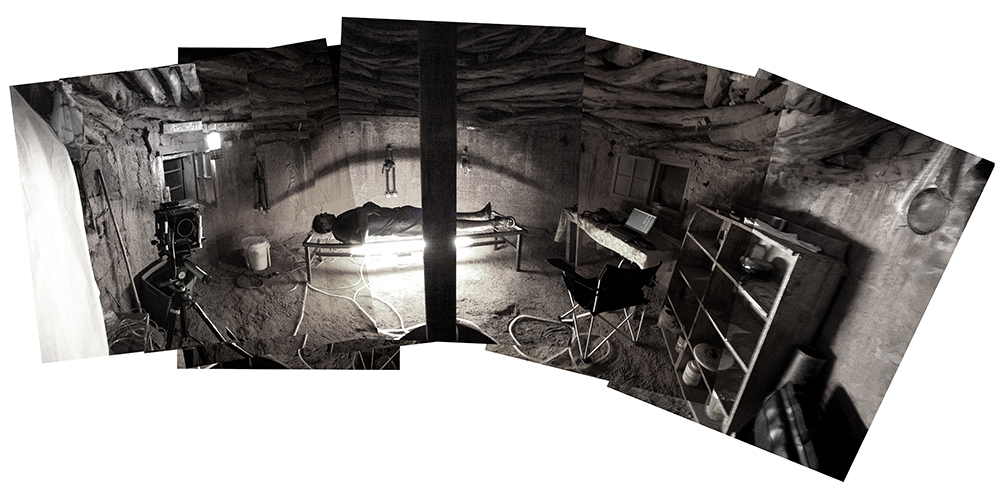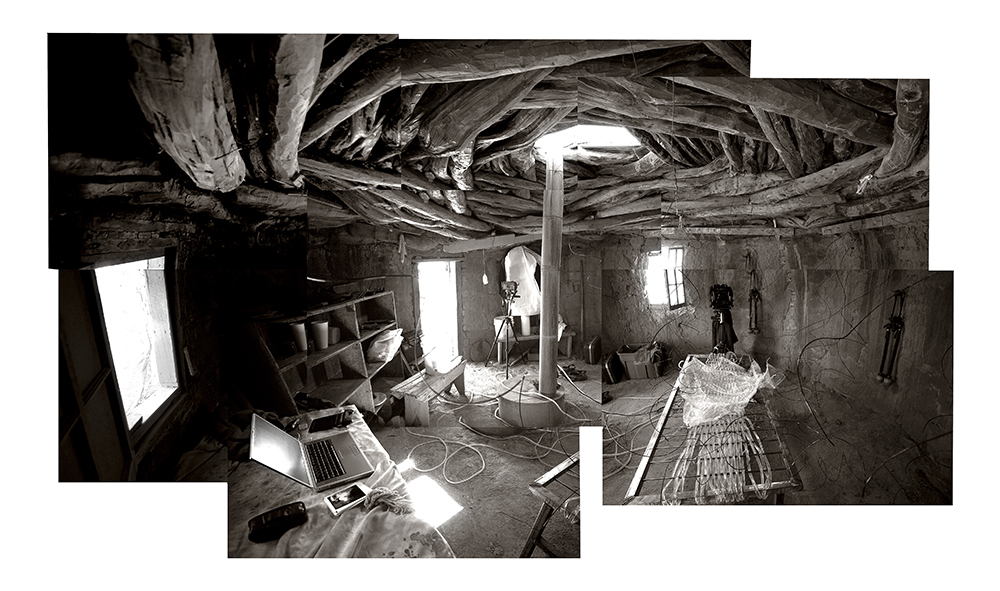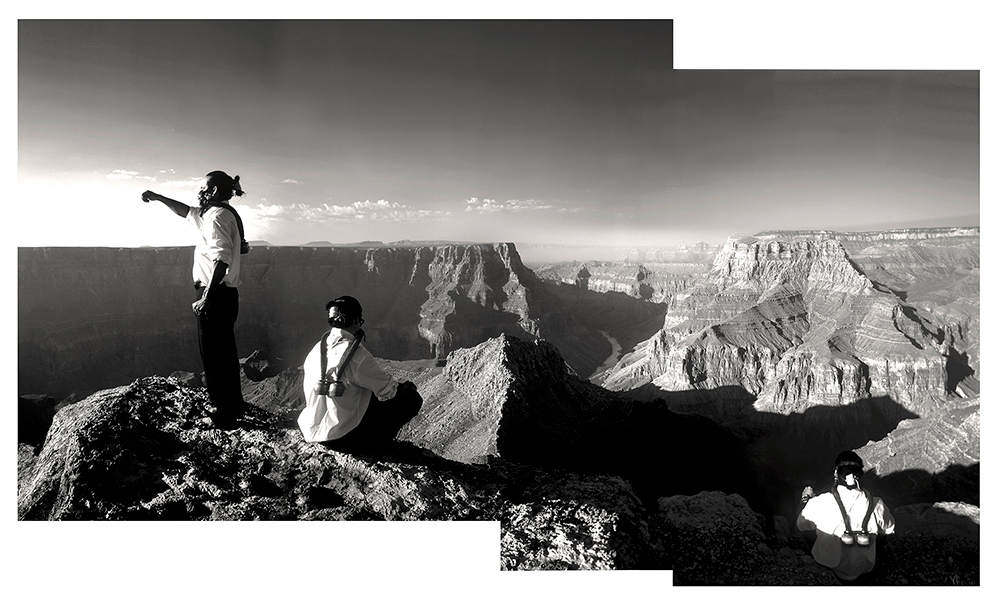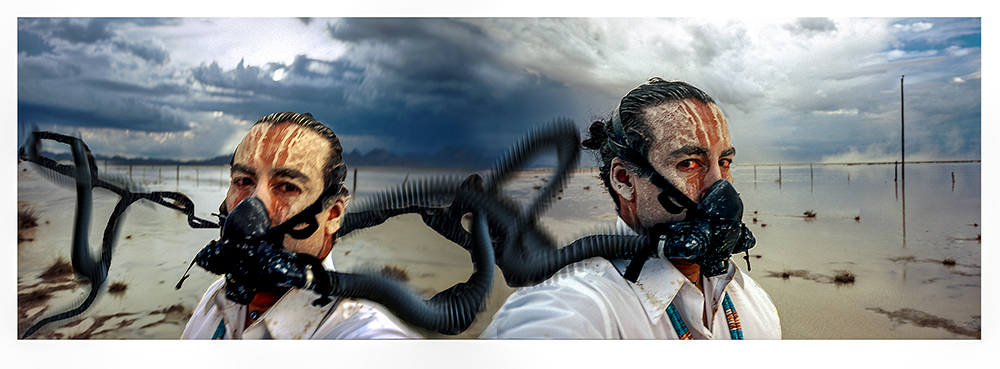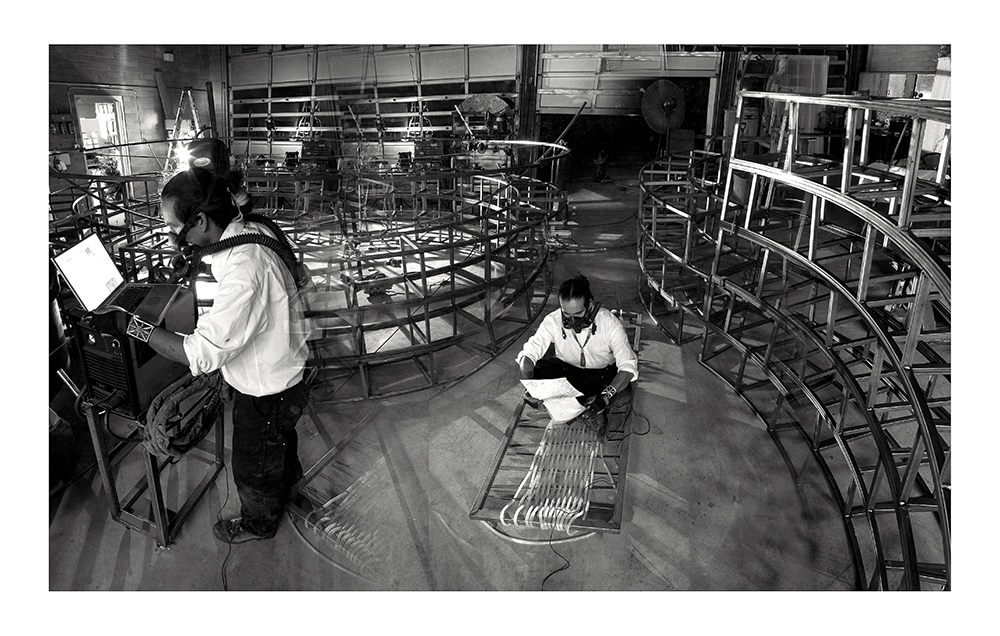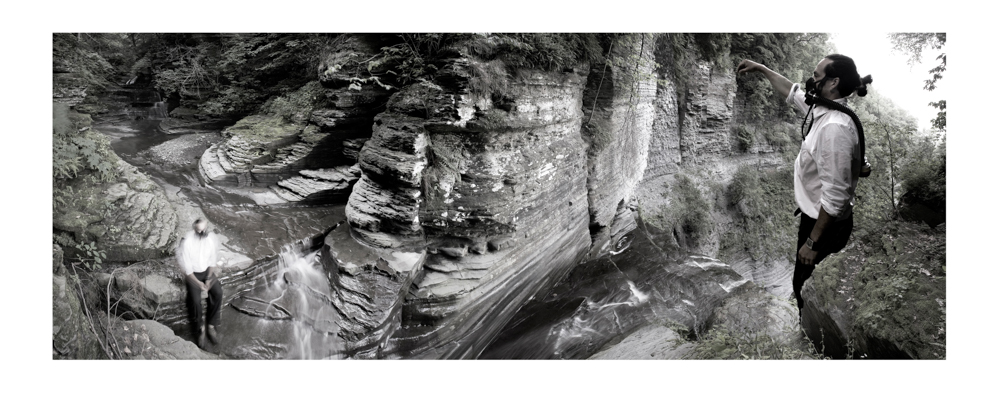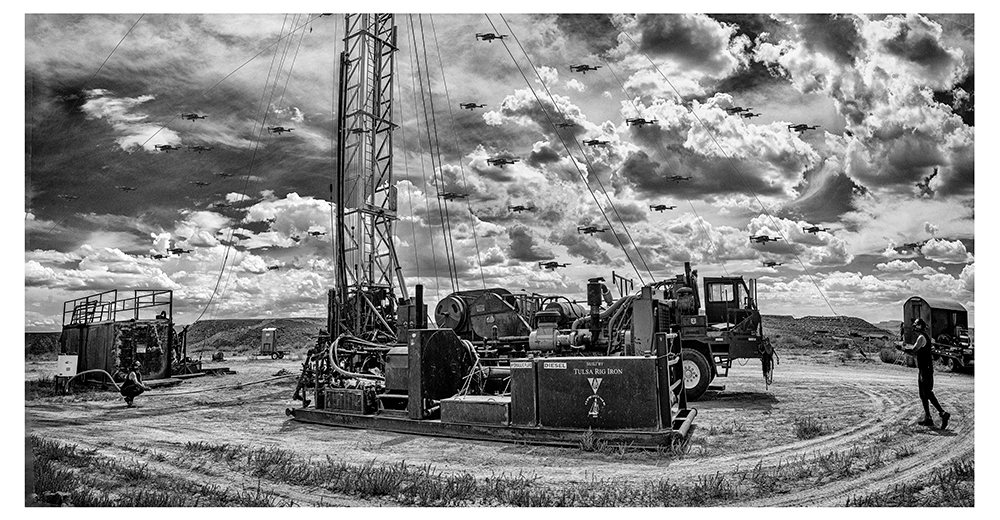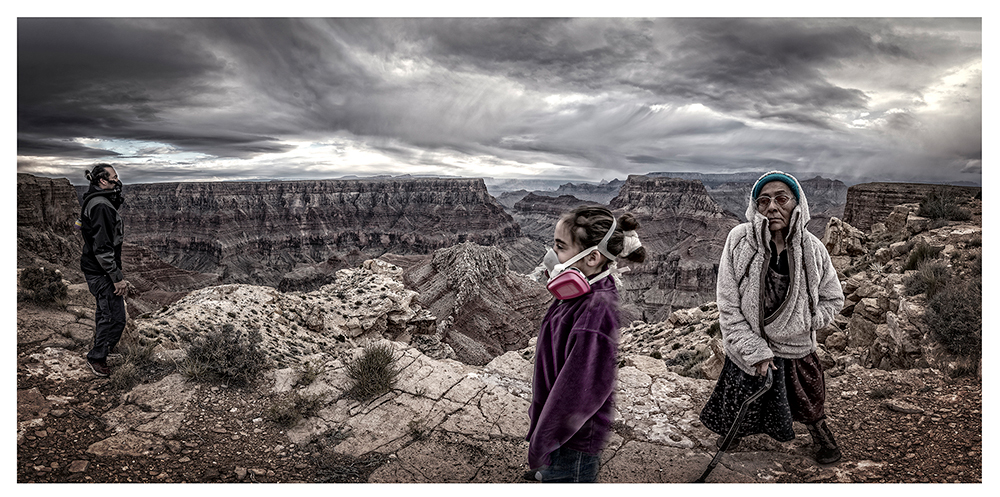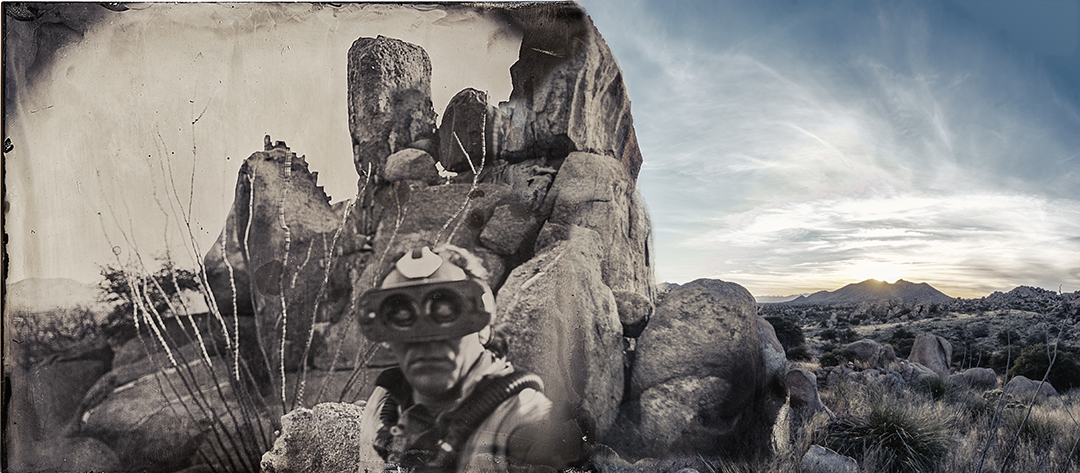Spirit: Focus on Indigenous Art, Artists, and Issues: Will Wilson
This week we partner with the National Center for Civil and Human Rights to share the work of Indigenous Artists. Today at 12pm EST, there will be a conversation with several of the photographers featured this week. As written by our curator, Donna Garcia: “this initiative should educate the public, through lens-based art, regarding the true history of indigenous people and recruit allies/advocates for indigenous issues everywhere, but with a specific focus on the US and Canada, where native lands and people аre still coming under attack everyday.” You can register for today’s event here.
Photographer and installation artist, Will Wilson (Diné/Bilagaana) creates a deliberate counter narrative to the romantic visions of Indigenous people living in an unchanging past. Though born in San Francisco, he draws inspiration from the many years he spent living on the Navajo Reservation as a child.
Wilson creates tension in his photography and installations, as the artist believes that Indigenous people remain responsible for protecting the environment and its future for all species. This story underlies the “quixotic relationship between a post-apocalyptic Diné (Navajo) man and the devastatingly beautiful, but toxic environment he inhabits.” This setting includes familiar symbols of cultural persistence, such as a Hogan (a traditional Navajo dwelling), coexisting with computers, wires, and futuristic furnishings.
Wilson describes AIR (Auto Immune Response) as a dialogue with “a post-apocalyptic Navajo man’s journey through an uninhabited landscape.” The artist’s use of self-portraits as the main character searching for answers about survival: “Where has everyone gone? What has occurred to transform the familiar and strange landscape that he wanders? Why has the land become toxic to him? How will he respond, survive, reconnect to the earth?”
For native tribes like the Diné, “toxic environment” encompasses not only the physical environment (the much larger Navajo Homeland, Dinétah, which was mined heavily for Uranium throughout the 20th Century), but also a historical environment of colonial resource extraction, arbitrary borders, and Federal Indian Policy which sought to “civilize the Indian” on reservations, for the more lucrative purpose of a land grab, for either mineral resources or agriculture. Wilson’s character resists arbitrary borders by existing in both, and yet his ever-present gas mask demonstrates that environmental contamination also ignores arbitrary borders. The result of this has been increased cases of cancer and autoimmune diseases among the people inhabiting these areas, destruction of ancestral land, and a continued history of “slow violence” against indigenous people.
Even though Wilson started this work in 2004, what is interesting to me is that it is more relevant than ever in 2020. As the world currently fights the devastating effects of climate change, and tries to push back on government’s irresponsibility around the decimation of our planet for profit, AIR reflects how native people have been fighting this for over a CENTURY.
Although this work focus’s on complex social and environmental issues, the result is a collection of dreamy yet powerful photomontages, in which the main subject merges with his environment creating poetic images that reflect dissolved states of time and space. The performative power of this work lies in the use of photography as an action for expressing feeling, not just for documentation.
Will Wilson’s art projects center around the continuation and transformation of customary indigenous cultural practice. He is a Diné photographer and trans-customary artist who spent his formative years living on the Navajo Nation. Wilson studied photography, sculpture, and art history at the University of New Mexico (MFA, Photography, 2002) and Oberlin College (BA, Studio Art and Art History, 1993). In 2007, Wilson won the Native American Fine Art Fellowship from the Eiteljorg Museum, in 2010 the Joan Mitchell Foundation Award for Sculpture, and in 2016 the Pollock-Krasner Foundation Grant for Photography. Wilson has held visiting professorships at the Institute of American Indian Arts (1999-2000), Oberlin College (2000-01), and the University of Arizona (2006-08). In 2017, Wilson’s received the NM Governor’s Award for Excellence in the Arts. His work is exhibited and collected nationally and internationally. Wilson is Program Head of Photography, Santa Fe Community College. Instagram: @willraywilson
Auto Immune Response: AIR
Since 2004, I have been creating a series of artworks entitled Auto Immune Response, which takes as its subject the quixotic relationship between a post-apocalyptic Diné (Navajo) man and the devastatingly beautiful, but toxic environment he inhabits. The series is an allegorical investigation of the extraordinarily rapid transformation of Indigenous lifeways, the dis-ease it has caused, and strategies of response that enable cultural survival. My hope is that this project will serve as a pollinator, creating formats for exchange and production that question and challenge the social, cultural and environmental systems that surround us. – Will Wilson
About the Editor:
Donna Garcia’s work illustrate a semiotic dislocation that has been organically reconstructed in a way that gives her subjects a voice in the present moment; something they didn’t have in the past. Her images rise above what they actually are and become empathetic recreations in a fine art narrative. She has an MFA in Photography from Savannah College of Art and Design and her work has been exhibited internationally. She is a 2019 nominee of reGENERATION 4: The Challenges of Photography and the Museum of Tomorrow. Musee de l’Elysee, Lausanne, Switzerland. Emerging Artists to Watch, Fine Art Photography, Nomination (only 250 lens-based emerging artists nominated worldwide).
About the National Center for Civil and Human Rights:
The National Center for Civil and Human Rights is a cultural institution and advocacy organization located in downtown Atlanta, Georgia. Powerful and immersive exhibits tell the story of the American Civil Rights Movement and connect this history to modern struggles for human rights around the world. The National Center for Civil and Human Rights has the distinction of being one of the only places to permanently display the papers and artifacts of Dr. Martin Luther King, Jr. Events, educational programs, and campaign initiatives bring together communities and prominent thought leaders on rights issues. For more information, visit civilandhumanrights.org and equaldignity.org. Also sign up for Campaign for Equal Dignity!
Join the conversation on @ctr4chr (Twitter), @ctr4chr (Facebook), and @ctr4chr (Instagram).
Posts on Lenscratch may not be reproduced without the permission of the Lenscratch staff and the photographer.
Recommended
-
Salua Ares: Absense as FormNovember 29th, 2025
-
Ricardo Miguel Hernández: When the memory turns to dust and Beyond PainNovember 28th, 2025
-
Pamela Landau Connolly: Columbus DriveNovember 26th, 2025
-
KELIY ANDERSON-STALEY: Wilderness No longer at the Edge of ThingsNovember 19th, 2025
-
Jackie Mulder: Thought TrailsNovember 18th, 2025


